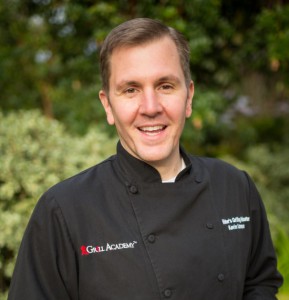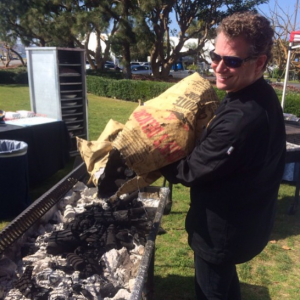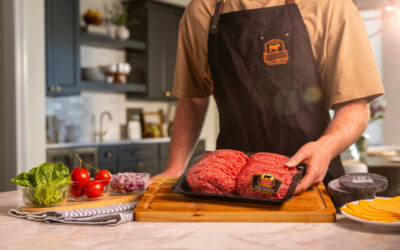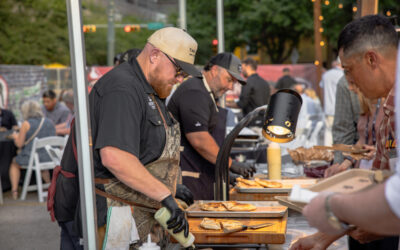
Time and temperature
But on the grill, 30 seconds could be the difference between done to perfection and done to the dog’s liking.

Kevin Kolman, whom we introduced last week as Weber’s grill master, says it’s all about starting with a hot (pre-heated to at least 500 degrees) grill and then paying attention.
“When I put a steak on, I’m going to set my phone to tell me when I need to flip it,” he says. “Trust me. That’s how I have fun at my barbecues.”
Kevin also says there’s no rule that says a certain cut should always be cooked a certain way.
“It’s not always time and temperature—it’s also thickness that plays real big into it,” he says, noting anything that’s cut especially thick—say a 2-inch steak—should be “roasted first and then seared.”
A good “rule of thumb” he says is 8 to 10 minutes of cook time for each inch of thickness.

Chef Michael Ollier, who has been on our culinary team for 6 years, says that grills provide a versatile cooking space, allowing for direct, high-heat cooking or low and slow techniques like braising or smoking. The latter are usually reserved for end meats, or cuts from the brisket, chuck and round.
“They have more collagen, or that network of webbing around the fibers of the meat. The structure is more advanced on those cuts that we know as less tender,” Michael says. “That webbing needs to be broken down, and the way to really break it down is through long amounts of time at low temperature.”
Starting with highly marbled beef improves the experience, whether it’s a quickly grilled steak or a long-smoked brisket.
“Marbling is less dense than protein, so if you have the marbling in that piece of meat it’s going to be easier to bite through,” says Dr. Phil Bass, our CAB meat scientist. “Juiciness is affected by marbling and also the flavor—you have the beautiful buttery flavor that comes from marbling. The more you have it, the more that desirable flavor comes out.”
However, in Chef Michael’s opinion, if you don’t preheat your grill or fail to get it hot enough, you’re not letting those middle meats shine.
“If you don’t sear the outside, you’re missing out on what we instinctually crave: the contrast between the crisp outside and the tender inside,” he says.
In fact, the chef is so determined to create the ideal steak that he often puts a cast iron pan right on the grill as he heats it up. “More and more I’m into that uniform crust, rather than a cosmetic grill mark.”

“Meat is 75% water, so the longer it’s on the grill, the more moisture that’s going to be cooked out of it,” Kevin says. “You’re looking to get it on the grill and off the grill as quickly as you possibly can.”
To this mama, who always has a hungry crew at suppertime, that sounds like a good idea for more than one reason!
May your bottom line be filled with black ink and your bellies with better beef!
Miranda
Be sure to follow along each week during Beef Month, as we cover everything from serving tips to grill maintenance. Check out last week’s post here.
You may also like
Success, Despite Challenges
Today’s market is complex and competitive. The collective effort of stakeholders across the supply chain positions Certified Angus Beef to meet the record demand for premium beef moving forward. Signals across the beef industry are clear and Angus farmers and ranchers seeking high-quality genetics that deliver premium beef are producing a product in high demand.
Keep the Supply Coming
A record-high 800 registrants from 17 countries gathered in Austin, Texas, to learn more about CAB, become inspired by the culinary work of chefs and pitmasters, and celebrate sales and production success. But at the forefront: supply and demand, a reflection of the chaotic past year, and preparing for what’s ahead.
Consumer Demand, Power of Quality
Demand for high-quality beef persists. But with that demand comes challenges. From tight cattle supplies to higher costs and increasing pressure on retailers to deliver a consistent eating experience, the pressure is on. David O’Diam, CAB VP of retail, addressed the current retail beef environment, highlighting both opportunities and challenges in today’s marketplace.



